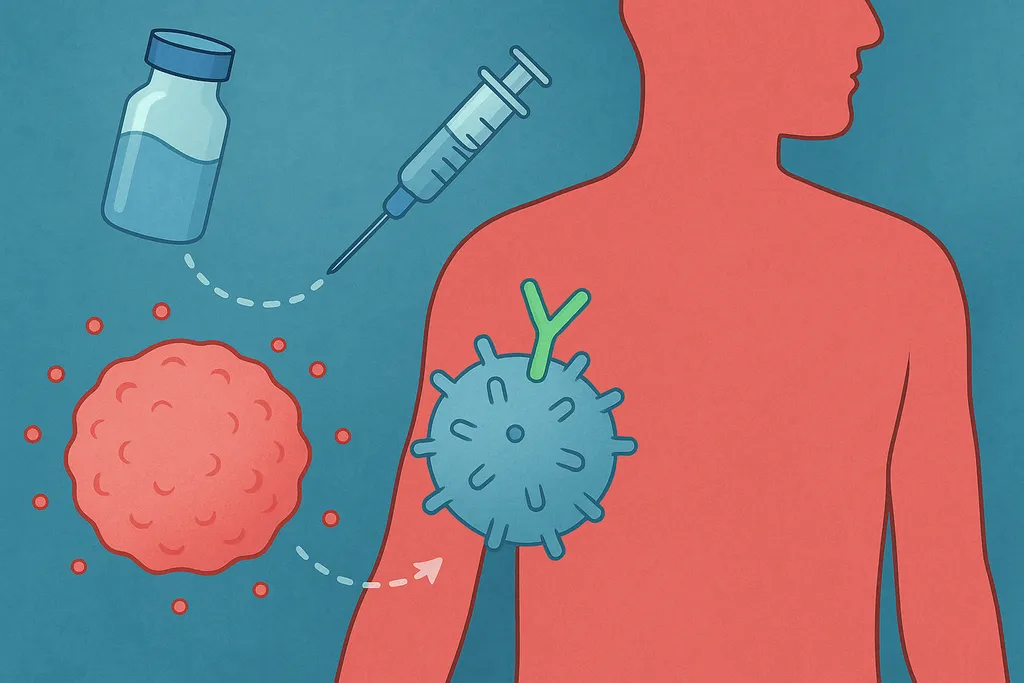Advancing CNS Lymphoma Treatment and Research

At UT Southwestern in Dallas, Texas, the focus on aggressive lymphomas encompasses both B-cell and T-cell types, where targeted drugs and cell therapy hold the promise for improved patient outcomes. Leading this effort, Dr. Praveen Ramakrishnan and his team are deeply involved in clinical trials, exploring innovative approaches to bring these therapies to the forefront of treatment. Dr. Ramakrishnan shared his research with HealthTree Foundation.
Central Nervous System Lymphoma
Lymphoma involving the central nervous system (CNS) occurs most often in diffuse large B-cell lymphoma (DLBCL) and other fast-growing non-Hodgkin lymphomas (NHL).
There are two types of CNS lymphoma: primary and secondary. Primary CNS lymphoma occurs when the lymphoma starts in the central nervous system. Secondary CNS lymphoma occurs when the cancer starts somewhere else in the body and spreads to the central nervous system.
People with CNS lymphoma typically have a poor prognosis due to the limited effectiveness of chemotherapy in crossing the blood-brain barrier. Lymphoma cells can survive within the central nervous system even when all other cancer cells elsewhere in the body have been killed off. This challenge can cause patients not to achieve remission or to relapse after treatment.
Continue reading about CNS lymphoma types, prognosis, and symptoms: Can DLBCL Spread to the Brain?
CNS Lymphoma Research
UT Southwestern has a unique initiative known as the CNS Lymphoma Task Force. This initiative aims to address the understudied nature of this subset of aggressive lymphomas and develop better treatment options.
One area of particular interest is the integration of cell therapies, immunotherapies, and targeted drugs into earlier stages of the disease and at the point of relapse. By shifting the focus toward upfront intervention, Dr. Ramakrishnan and his team aim to enhance efficacy and prolong the length of remission for patients facing aggressive lymphomas.
UT Southwestern Collaborative Efforts
To tackle these complexities, UT Southwestern uses a multidisciplinary approach, using the expertise of neurosurgery, radiation oncology, neurooncology, and medical oncology. Through collaborative efforts, they aim to develop novel trials and diagnostic tools tailored to the intricacies of CNS lymphomas. Centralizing expertise within a specialized center ensures that patients receive comprehensive and personalized care, optimizing their chances for successful management and improved outcomes.
To learn more about DLBCL from other lymphoma specialists, watch our modules from HealthTree University.
At UT Southwestern in Dallas, Texas, the focus on aggressive lymphomas encompasses both B-cell and T-cell types, where targeted drugs and cell therapy hold the promise for improved patient outcomes. Leading this effort, Dr. Praveen Ramakrishnan and his team are deeply involved in clinical trials, exploring innovative approaches to bring these therapies to the forefront of treatment. Dr. Ramakrishnan shared his research with HealthTree Foundation.
Central Nervous System Lymphoma
Lymphoma involving the central nervous system (CNS) occurs most often in diffuse large B-cell lymphoma (DLBCL) and other fast-growing non-Hodgkin lymphomas (NHL).
There are two types of CNS lymphoma: primary and secondary. Primary CNS lymphoma occurs when the lymphoma starts in the central nervous system. Secondary CNS lymphoma occurs when the cancer starts somewhere else in the body and spreads to the central nervous system.
People with CNS lymphoma typically have a poor prognosis due to the limited effectiveness of chemotherapy in crossing the blood-brain barrier. Lymphoma cells can survive within the central nervous system even when all other cancer cells elsewhere in the body have been killed off. This challenge can cause patients not to achieve remission or to relapse after treatment.
Continue reading about CNS lymphoma types, prognosis, and symptoms: Can DLBCL Spread to the Brain?
CNS Lymphoma Research
UT Southwestern has a unique initiative known as the CNS Lymphoma Task Force. This initiative aims to address the understudied nature of this subset of aggressive lymphomas and develop better treatment options.
One area of particular interest is the integration of cell therapies, immunotherapies, and targeted drugs into earlier stages of the disease and at the point of relapse. By shifting the focus toward upfront intervention, Dr. Ramakrishnan and his team aim to enhance efficacy and prolong the length of remission for patients facing aggressive lymphomas.
UT Southwestern Collaborative Efforts
To tackle these complexities, UT Southwestern uses a multidisciplinary approach, using the expertise of neurosurgery, radiation oncology, neurooncology, and medical oncology. Through collaborative efforts, they aim to develop novel trials and diagnostic tools tailored to the intricacies of CNS lymphomas. Centralizing expertise within a specialized center ensures that patients receive comprehensive and personalized care, optimizing their chances for successful management and improved outcomes.
To learn more about DLBCL from other lymphoma specialists, watch our modules from HealthTree University.

about the author
Kat Richardson
Kat is from Lehi, Utah and is the education manager for lymphoma. She has worked in healthcare for a decade now, and earned her degree in community health education and promotion. Kat is passionate about disease prevention as well as improving quality of life and health equity. She enjoys reading, hiking, baking, ice skating, gardening, time with her family and friends, and most of all, spoiling her nieces and nephew.
More on Treatment Advances
Trending Articles
Get the Latest Large B Cell Lymphoma Updates, Delivered to You.
By subscribing to the HealthTree newsletter, you'll receive the latest research, treatment updates, and expert insights to help you navigate your health.
Together we care.
Together we cure.
3x Faster.










